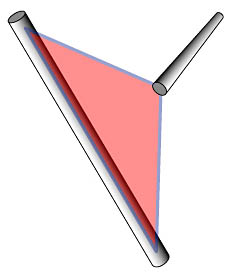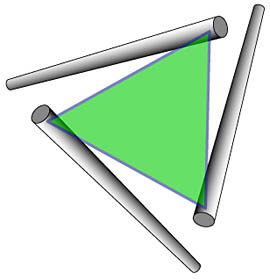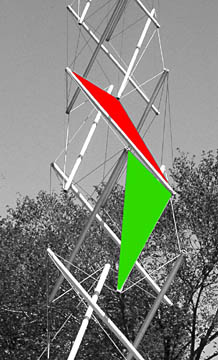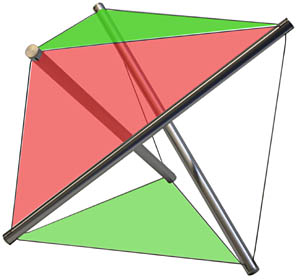| It is possible to construct any number of varied tensegrity configurations, from simple to highly complex. Yet, only those forms whose tension network is composed entirely of triangles are truly stable. If the network has squares, pentagons, etc. the structure will be deformable and flaccid. This is especially true of tensegrity spheres, none of which have triangulated tension networks.
The triangles in a tensegrity network are formed in two different ways, designated as type 1 and type 2 triangles. |

Type 1:Tension/compression triangle
Working much like a sling used by riggers for hoisting, triangles of type 1 are formed with two struts and two tendons. The two tension lines run from the end of one strut to the two ends of a second strut. Type 1 triangles always occur in pairs like butterfly wings. |

Type 2: Tension-only triangle
A tensegrity triangle can also be formed with three tension lines attached to three different struts |
|

The two different triangle types identified on a photo of Needle Tower at the Hirshhorn Museum and Sculpture Garden in Washington, D.C.
|

A three-strut prism showing type 1, red and type 2 green triangles |
|



